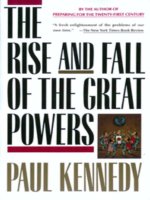Christopher m clark iron kingdom the rise and dow 947 (v5 0)
Bạn đang xem bản rút gọn của tài liệu. Xem và tải ngay bản đầy đủ của tài liệu tại đây (5.8 MB, 582 trang )
PENGUIN BOOKS
IRON KINGDOM
‘The story of Prussia is one that has been told many times, but seldom as intelligently, elegantly
and interestingly as it is here… a monumental history’ Richard Overy, Daily Telegraph
‘Outdistances the rest of the field, not only for the importance of its subject but for the verve and
skill with which it is presented’ Michael Howard, The Times Literary Supplement Books of the Year
‘Lively, thoroughly engaging… Clark’s masterly and enthusiastic narrative takes in everything from
the role of women in the Junker class to 1920s Berlin cabaret’ Sunday Times Books of the Year
‘Clark’s comprehensive account superbly navigates clear paths through the complexities of Prussian
history over more than three centuries… This ambitious volume, with its elegance and humour, will
become a classic’ BBC History Magazine
‘An impressive piece of work. The prose is clear and graceful, the narrative sustained and
engaging… he has mined a wonderful collection of anecdotes and personal portraits’ The Times
Literary Supplement
‘Excellent… a well-informed and fair-minded historical investigation’ Guardian
‘Iron Kingdom is not just good: it is everything a history book ought to be’ Sunday Telegraph
‘Excellent’ Literary Review
‘Masterful… triumphant… Written with growing verve and passion, it is the compelling story of
why – of course – Prussia mattered so much more than any German state’ The Times Higher
Education Supplement
‘Lively and thoughtful… an excellent account… yields valuable insights’ London Review of Books
ABOUT THE AUTHOR
Christopher Clark is Reader in Modern History at St Catharine’s College, Cambridge. He is the
author of The Politics of Conversion: Missionary Protestantism and the Jews in Prussia, 1728–
1941 (Oxford, 1995) and a biography of Kaiser Wilhelm II.
CHRISTOPHER CLARK
Iron Kingdom
The Rise and Downfall of Prussia, 1600–1947
PENGUIN BOOKS
PENGUIN BOOKS
Published by the Penguin Group
Penguin Books Ltd, 80 Strand, London WC2R 0RL, England
Penguin Group (USA) Inc., 375 Hudson Street, New York, New York 10014, USA
Penguin Group (Canada), 90 Eglinton Avenue East, Suite 700, Toronto, Ontario, Canada M 4P 2Y3
(a division of Pearson Penguin Canada Inc.)
Penguin Ireland, 25 St Stephen’s Green, Dublin 2, Ireland
(a division of Penguin Books Ltd)
Penguin Group (Australia), 250 Camberwell Road, Camberwell, Victoria 3124, Australia
(a division of Pearson Australia Group Pty Ltd)
Penguin Books India Pvt Ltd, 11 Community Centre, Panchsheel Park, New Delhi – 110 017, India
Penguin Group (NZ), 67 Apollo Drive, Rosedale, North Shore 0632, New Zealand
(a division of Pearson New Zealand Ltd)
Penguin Books (South Africa) (Pty) Ltd, 24 Sturdee Avenue, Rosebank, Johannesburg 2196, South Africa
Penguin Books Ltd, Registered Offices: 80 Strand, London WC2R 0RL, England
www.penguin.com
First published by Allen Lane 2006
Published in Penguin Books 2007
1
Copyright © Christopher Clark, 2006
All rights reserved
The moral right of the author has been asserted
Except in the United States of America, this book is sold subject
to the condition that it shall not, by way of trade or otherwise, be lent,
re-sold, hired out, or otherwise circulated without the publisher’s
prior consent in any form of binding or cover other than that in
which it is published and without a similar condition including this
condition being imposed on the subsequent purchaser
EISBN: 978–0–141–90402–3
For Nina
Contents
List of Illustrations
List of Maps
Acknowledgements
Introduction
1 The Hohenzollerns of Brandenburg
2 Devastation
3 An Extraordinary Light in Germany
4 Majesty
5 Protestants
6 Powers in the Land
7 Struggle for Mastery
8 Dare to Know!
9 Hubris and Nemesis: 1789–1806
10 The World the Bureaucrats Made
11 A Time of Iron
12 God’s March through History
13 Escalation
14 Splendour and Misery of the Prussian Revolution
15 Four Wars
16 Merged into Germany
17 Endings
Notes
Index
List of Illustrations
1 Lucas Cranach, Elector Joachim II, c . 1551
2 Richard Brend’amour, Elector George William
3 Illustration from Philip Vincent, The Lamentations of Germany, 1638
4 Albert van der Eeckhout (attrib.), Frederick William the Great Elector as Scipio, c . 1660
5 A view of the city of Königsberg, c . 1690
6 Samuel Theodor Gericke (attrib.), Frederick I, King in Prussia, after 1701
7 Anon., Jacob Paul von Gundling, 1729
8 Georg Lisiewski (attrib.), The Tobacco Ministry, c . 1737
9 Johann Christof Merk, Grenadier James Kirkland, c . 1714
10 Daniel Chodowiecki, Crown Prince Frederick greets Katte through the window of his cell
11 The main façade of the Orphanage in Halle
12 Anon., King Frederick William I greets the Protestant exiles from the archbishopric of
Salzburg, 1732
13 Carved frieze from the epitaph of Mayor Thomas Matthias, St Gotthard’s church, Brandenburg,
1549/1576
14 Havelberg Cathedral
15 Daniel Chodowiecki, Soldier’s wife begging, 1764
16 E. Feltner, ‘The Junker’, 1906
17 Adolph Menzel, Frederick the Great visits a factory, 1856
18 Johann Gottlieb Glume, Frederick the Great before the Seven Years War
19 Battle of Kunersdorf, 12 August 1759
20 Johann Heinrich Christoph Franke (after), Frederick the Great, orig. 1764
21 Daniel Chodowiecki, Frederick the Great opens the sarcophagus of the Great Elector, 1789
22 Johann Michael Siegfried Löwe (after Daniel Chodowiecki), Moses Mendelssohn examined
at Potsdam’s Berlin Gate, 1792
23 Anon., Baron Karl vom und zum Stein
24 Christian Rauch, Karl August, Prince von Hardenberg, 1816
25 Le Beau (after Nadet), Napoleon and Tsar Alexander meeting at Tilsit
26 Friederich Meyer (after Heinrich Anton Dähling), The Royal Family in the palace gardens at
Charlottenburg, c. 1805
27 Johann Gottfried Schadow, The princesses Luise and Frederike of Prussia, 1795–7
28 Death mask of Queen Luise, 1810
29 Friedrich Bury, Gerhard Johann von Scharnhorst, before 1813
30 Luise Henry, Wilhelm von Humboldt, 1826
31 Anon., Major von Schill
32 Anon., Johann David Ludwig Count Yorck
33 Johann Lorenz Rugendas, The Battle of Leipzig
34 The Iron Cross
35 The Order of Luise
36 Moritz Daniel Oppenheimer, Return of the Jewish Volunteer from the Wars of Liberation to
his family still living by the Old Custom, 1833–34
37 Karl Sand on his way to Mannheim
38 George French Angas, Old Lutheran settlement at Klemzig, South Australia, 1845
39 Franz Kugler, Hegel at the lectern, 1828
40 Anon., Frederick William IV as a tipsy Puss-in-Boots, 1843
41 Anon., Hunger and Desperation, 1844
42 Anon., From the club life of Berlin in 1848
43 F. G. Nordmann, The Barricade on the Krone and Friedrichstrasse, 1848, as seen by an
eyewitness
44 Anon., Frederick William IV receives a delegation from the Frankfurt Parliament, 1849
45 Anon., Otto von Bismarck at the age of thirty-two, 1847
46 Anon., Prussian troops storm the Danish entrenchments at Düppel, 18April 1864
47 Anon., (after Anton von Werner), King William I of Prussia is proclaimed German Emperor
in the Hall of Mirrors, 1871
48 The Avenue of Victory, Berlin
49 Anon., Advertisement for Odol mouthwash
50 Ludwig Stutz, Anti-clerical cartoon, 1900
51 Wilhelm Friedrich Georg Pape, Kaiser William II with his family in the grounds of Sans
Souci, 1891
52 Olaf Gulbransson, Imperial Manoeuvres, 1909
53 Bruno Paul, Buy War Bonds!, 1917
54 George Grosz, Cheers Noske, 1919
55 Max Liebermann, Otto Braun, 1932
56 The ‘Day of Potsdam’
57 Excavation of the Hindenburg Stone, 1935
58 Hindenburg’s coffin is carried into his mausoleum at Tannenberg, 1935(photograph courtesy of
Matthias Bräunlich)
59 Jewish families are deported from Memel
60 Fallen fragments of a statue of William I, East Berlin, 1950
61 The capture of Königsberg by Soviet troops, 1945
62 Statues from the Siegesallee are buried in Bellevue Palace Gardens, 1954
List of Maps
A History of Brandenburg–Prussia in six maps
Brandenburg, 1600
The Jülich-Kleve Succession
Ducal Prussia
The first partition of Poland, 1772
The second and third partitions of Poland, 1793, 1795
The German Confederation, in 1815
Development of the Prussian–German Customs Union
The Prussian–Austrian war of 1866
Acknowledgements
Between March 1985 and October 1987, I lived and studied in West Berlin, a place that no longer
exists. It was a walled city islanded in Communist East Germany, ringed by a palisade of concrete
slabs, ‘a cage,’ as one visiting Italian journalist put it, ‘in which one feels free.’ No one who lived
there will forget the unique atmosphere of this marooned western citadel – a vibrant, multi-ethnic
enclave, a haven for youthful refuseniks dodging West German military service, and a symbol of the
Cold War in which formal sovereignty still rested with the victorious powers of 1945. There was
little in West Berlin to invoke the Prussian past, which seemed as remote as antiquity.
Only when you crossed the political border at Friedrichsstrasse station, passing through turnstiles
and metal corridors under the scrutiny of unsmiling guards, did you encounter the heart of the old
Prussian city of Berlin–the long line of graceful buildings on Unter den Linden and the breathtaking
symmetries of the Forum Fredericianum, where Frederick the Great advertised the cultural
pretensions of his kingdom. To cross the border was to travel back into the past, a past only partly
obscured by wartime devastation and decades of post-war neglect. A tree had sprouted in the broken
dome of the eighteenth-century French Church on the Gendarmenmarkt, its roots reaching deep into the
stonework. Berlin Cathedral was still a blackened hulk disfigured by the artillery and rifle fire of
1945. For an Australian from easygoing seaside Sydney, these crossings had an inexhaustible
fascination.
Students of the Prussian past can draw on one of the world’s most sophisticated and varied
historiographies. There is, first of all, the rich and still robust tradition of transatlantic Anglophone
writing on Prussia. For readers of German, there is the extraordinary native Prussian canon, which
reaches back to the beginnings of history as a modern academic discipline. The articles and
monographs of the classic era of Prussian historiography are still remarkable for the depth and
ambition of their scholarship and for the verve and elegance of their writing. The years since 1989
have seen a renewal of interest among younger German scholars and brought wider recognition to
those East German historians whose work, notwithstanding the narrow intellectual horizons of the
German Democratic Republic, did much to illuminate the evolving textures of Prussian society. One
of the chief pleasures of working on this book has been the licence to browse widely in the writings
of so many colleagues, alive and dead.
There are also more immediate debts. James Brophy, Karin Friedrich, Andreas Kossert, Benjamin
Marschke, Jan Palmowski, Florian Schui and Gareth Stedman Jones shared with me pre-publication
versions of their manuscripts. Marcus Clausius sent copies of his transcripts from the archives of the
German Colonial Office. I benefited from the advice and conversation of Holger Afflerbach,
Margaret Lavinia Anderson, David Barclay, Derek Beales, Stefan Berger, Tim Blanning, Richard
Bosworth, Annabel Brett, Clarissa Campbell-Orr, Scott Dixon, Richard Drayton, Philip Dwyer,
Richard Evans, Niall Ferguson, Bernhard Fulda, Wolfram Kaiser, Alan Kramer, Michael LedgerLomas, Julia Moses, Jonathan Parry, Wolfram Pyta, James Retallack, Torsten Riotte, Emma
Rothschild, Ulinka Rublack, Martin Rühl, Hagen Schulze, Hamish Scott, James Sheehan, Brendan
Simms, Jonathan Sperber, Thomas Stamm-Kuhlmann, Jonathan Steinberg, Adam Tooze, Maiken
Umbach, Helmut Walser-Smith, Joachim Whaley, Peter Wilson, Emma Winter and Wolfgang
Mommsen, a frequent visitor to Cambridge, whose unexpected death in August 2004was such a shock
to his friends and colleagues here. Like many historians of Germany now working in the United
Kingdom, I learned a great deal from collaborating on ‘The Struggle for Mastery in Germany’, the
Cambridge Specified Subject convened by Tim Blanning and Jonathan Steinberg in the 1980s and
early 1990s. I owe much to twenty-five years of spirited conversation with my father-in-law, Rainer
Lübbren, a discerning reader of history.
Special thanks are due to those friends who had the generosity and stamina to read and comment on
part or all of the manuscript: Chris Bayly, my father Peter Clark, James Mackenzie, Holger Nehring,
Hamish Scott, James Simpson, Gareth Stedman Jones, and John A. Thompson. Patrick Higgins
dispensed imaginative advice and ran a red line through passages of bombast and irrelevance.
Working with the people at Penguin – Chloe Campbell, Richard Duguid and Rebecca Lee–has been
another of the pleasures of this project. Simon Winder is the editor’s Platonic ideal, endowed with
that second sight that sees more clearly than authors themselves the book trapped within the
manuscript. Bela Cunha’s copy-editing was a vigilante rampage against error, inconsistency and
syllogism. Thanks also to Cecilia Mackay for help in resourcing the pictures. With all this able
support, the book ought in theory to be faultless – I take full responsibility for the fact that it is not.
How does one thank the most important people of all? Josef and Alexander grew taller during the
writing of this book and distracted me in a thousand happy ways. Nina Lübbren bore my selfish
obsession with humour and good grace and was the first reader and critic of every paragraph. It is to
her that I dedicate this book with much love.
Introduction
On 25 February 1947, representatives of the Allied occupation authorities in Berlin signed a law
abolishing the state of Prussia. From this moment onward, Prussia belonged to history.
The Prussian State, which from early days has been a bearer of militarism and reaction in Germany, has de facto ceased to exist.
Guided by the interests of preservation of peace and security of peoples, and with the desire to assure further reconstruction of the
political life of Germany on a democratic basis, the Control Council enacts as follows:
ARTICLE I
The Prussian State together with its central government and all its agencies is abolished.1
Law No. 46 of the Allied Control Council was more than an administrative act. In expunging
Prussia from the map of Europe, the Allied authorities also passed judgement upon it. Prussia was not
just one German territory among others, on a par with Baden, Württemberg, Bavaria or Saxony; it
was the very source of the German malaise that had afflicted Europe. It was the reason why Germany
had turned from the path of peace and political modernity. ‘The core of Germany is Prussia,’
Churchill told the British Parliament on 21 September 1943. ‘There is the source of the recurring
pestilence.’2 The excision of Prussia from the political map of Europe was thus a symbolic necessity.
Its history had become a nightmare that weighed upon the minds of the living.
The burden of that ignominious termination presses on the subject matter of this book. In the
nineteenth and early twentieth centuries, the history of Prussia had been painted in mainly positive
tones. The Protestant historians of the Prussian School celebrated the Prussian state as a vehicle of
rational administration and progress and the liberator of Protestant Germany from the toils of
Habsburg Austria and Bonapartist France. They saw in the Prussian-dominated nation-state founded
in 1871 the natural, inevitable and best outcome of Germany’s historical evolution since the
Reformation.
This rosy view of the Prussian tradition faded after 1945, when the criminality of the Nazi regime
cast its long shadows over the German past. Nazism, one prominent historian argued, was no
accident, but rather ‘the acute symptom of a chronic [Prussian] infirmity’; the Austrian Adolf Hitler
was an ‘elective Prussian’ in his mentality. 3 The view gained ground that German history in the
modern era had failed to follow the ‘normal’ (i.e. British, American or west European) route to a
relatively liberal and untroubled political maturity. Whereas the power of traditional elites and
political institutions had been broken in France, Britain and the Netherlands by ‘bourgeois
revolutions’, so the argument ran, this had never been achieved in Germany. Instead, Germany
followed a ‘special path’ (Sonderweg) that culminated in twelve years of Nazi dictatorship.
Prussia played a key role in this scenario of political malformation, for it was here that the classical
manifestations of the special path seemed most clearly in evidence. Foremost among these was the
unbroken power of the Junkers, the noble landowners of the districts to the east of the river Elbe,
whose dominance within government, the military and rural society had survived the age of the
European revolutions. The consequences for Prussia and by extension for Germany were, it appeared,
disastrous: a political culture marked by illiberalism and intolerance, an inclination to revere power
over legally grounded right, and an unbroken tradition of militarism. Central to nearly all diagnoses of
the special path was the notion of a lopsided or ‘incomplete’ process of modernization, in which the
evolution of political culture failed to keep pace with innovation and growth in the economic sphere.
By this reading, Prussia was the bane of modern German and European history. Imprinting its own
peculiar political culture on the nascent German nation-state, it stifled and marginalized the more
liberal political cultures of the German south and thus laid the foundations for political extremism and
dictatorship. Its habits of authoritarianism, servility and obedience prepared the ground for the
collapse of democracy and the advent of dictatorship.4
This paradigm shift in historical perceptions met with energetic counterblasts from historians
(mainly West German, and mainly of liberal or conservative political orientation) who sought to
rehabilitate the reputation of the abolished state. They highlighted its positive achievements – an
incorruptible civil service, a tolerant attitude to religious minorities, a law code (from 1794) admired
and imitated throughout the German states, a literacy rate (in the nineteenth century) unequalled in
Europe and a bureaucracy of exemplary efficiency. They drew attention to the vibrancy of the
Prussian enlightenment. They noted the capacity of the Prussian state to transform and reconstitute
itself in times of crisis. As a counterpart to the political servility emphasized by the special-path
paradigm, they stressed notable episodes of insubordination, most importantly the role played by
Prussian officers in the plot to assassinate Hitler in July 1944. The Prussia they depicted was not
without flaws, but it had little in common with the racial state created by the Nazis.5
The high-water mark for this work of historical evocation was the massive Prussia Exhibition that
opened in Berlin in 1981 and was seen by over half a million visitors. Room after room full of
objects and tables of text prepared by an international team of scholars allowed the viewer to
traverse Prussian history through a succession of scenes and moments. There were military
paraphernalia, aristocratic family trees, images of life at court and historic battle paintings, but also
rooms organized around the themes of ‘tolerance’, ‘emancipation’ and ‘revolution’. The aim was not
to shed a nostalgic glow over the past (though it was certainly too positive for many critics on the
political left), but to alternate light and shadow, and thereby to ‘draw the balance’ of Prussian history.
Commentaries on the exhibition – both in the official catalogues and in the mass media – focused on
the meaning of Prussia for contemporary Germans. Much of the discussion centred on the lessons that
could or could not be learned from Prussia’s troubled journey into modernity. There was talk of the
need to honour the ‘virtues’–disinterested public service and tolerance, for example – while
disassociating oneself from the less appetizing features of the Prussian tradition, such as autocratic
habits in politics or a tendency to glorify military achievement.6
Prussia remains, more than two decades later, an idea with the power to polarize. The unification of
Germany after 1989 and the transfer of the capital from Catholic, ‘western’ Bonn to Protestant,
‘eastern’ Berli gave rise to misgivings about the still unmastered potency of the Prussian past. Would
the spirit of ‘old Prussia’ reawaken to haunt the German Republic? Prussia was extinct, but ‘Prussia’
re-emerged as a symbolic political token. It has become a slogan for elements of the German right,
who see in the ‘traditions’ of ‘old Prussia’ a virtuous counterweight to ‘disorientation’, ‘the erosion
of values’, ‘political corruption’ and the decline of collective identities in contemporary Germany. 7
Yet for many Germans, ‘Prussia’ remains synonymous with everything repellent in German history:
militarism, conquest, arrogance and illiberality. The controversy over Prussia has tended to flicker
back into life whenever the symbolic attributes of the abolished state are brought into play. The reinterment of the remains of Frederick the Great at his palace of Sans Souci in August 1991 was the
subject of much fractious discussion and there have been heated public disputes over the plan to
reconstruct the Hohenzollern city palace on the Schlossplatz in the heart of Berlin.8
In February 2002, Alwin Ziel, an otherwise inconspicuous Social Democratic minister in the
Brandenburg state government, achieved instant notoriety when he intervened in a debate over a
proposed merger of the city of Berlin with the federal state of Brandenburg. ‘Berlin-Brandenburg’, he
argued, was a cumbersome word; why not name the new territory ‘Prussia’? The suggestion set off a
new wave of debate. Sceptics warned of a rebirth of Prussia, the issue was discussed on television
talk shows across Germany, and the Frankfurter Allgemeine Zeitung ran a series of articles under the
rubric ‘Should there be a Prussia?’ (Darf Preussen sein?) Among the contributors was Professor
Hans-Ulrich Wehler, a leading exponent of the German special path, whose article – a vociferous
rejection of Ziel’s proposal – bore the title ‘Prussia poisons us’.9
No attempt to understand the history of Prussia can entirely escape the issues raised by these
debates. The question of how exactly Prussia was implicated in the disasters of Germany’s twentieth
century must be a part of any appraisal of the state’s history. But this does not mean that we should
read the history of Prussia (or indeed of any state) from the perspective of Hitler’s seizure of power
alone. Nor does it oblige us to assess the Prussian record in binary ethical categories, dutifully
praising light and deploring shadow. The polarized judgements that abound in contemporary debate
(and in parts of the historical literature) are problematic, not just because they impoverish the
complexity of the Prussian experience, but also because they compress its history into a national
teleology of German guilt. Yet the truth is that Prussia was a European state long before it became a
German one. Germany was not Prussia’s fulfilment – here I anticipate one of the central arguments of
this book – but its undoing.
I have thus made no attempt to tease out the virtue and vice in the Prussian record or to weigh them
in the balance. I make no claim to extrapolate ‘lessons’ or to dispense moral or political advice to
present or future generations. The reader of these pages will encounter neither the bleak,
warmongering termite-state of some Prussophobe treatises, nor the cosy fireside scenes of the
Prussophile tradition. As an Australian historian writing in twenty-first-century Cambridge, I am
happily dispensed from the obligation (or temptation) either to lament or to celebrate the Prussian
record. Instead, this book aims to understand the forces that made and unmade Prussia.
It has recently become fashionable to emphasize that nations and states are not natural phenomena
but contingent, artificial creations. It is said that they are ‘edifices’ that have to be constructed or
invented, with collective identities that are ‘forged’ by acts of will. 10 No modern state more strikingly
vindicates this perspective than Prussia: it was an assemblage of disparate territorial fragments
lacking natural boundaries or a distinct national culture, dialect or cuisine. This predicament was
amplified by the fact that Prussia’s intermittent territorial expansion entailed the periodic
incorporation of new populations whose loyalty to the Prussian state could be acquired, if at all, only
through arduous processes of assimilation. Making ‘Prussians’ was a slow and faltering enterprise
whose momentum had begun to wane long before Prussian history reached its formal termination. The
name ‘Prussia’ itself had a contrived quality, since it derived not from the northern heartland of the
Hohenzollern dynasty (the Mark Brandenburg around the city of Berlin), but from a non-adjacent
Baltic duchy that formed the easternmost territory of the Hohenzollern patrimony. It was, as it were,
the logo the Electors of Brandenburg adopted after their elevation to royal status in 1701. The core
and essence of the Prussian tradition was an absence of tradition. How this desiccated, abstract polity
acquired flesh and bones, how it evolved from a block-printed list of princely titles into something
coherent and alive, and how it learned to win the voluntary allegiance of its subjects – these questions
are at the centre of this book.
The word ‘Prussian’ stills stands in common parlance for a particular kind of authoritarian
orderliness, and it is all too easy to imagine the history of Prussia as the unfolding of a tidy plan by
which the Hohenzollerns gradually unfurl the power of the state, integrating their possessions,
extending their patrimony and pushing back the provincial nobilities. In this scenario, the state rises
out of the confusion and obscurity of the medieval past, severing its bonds with tradition, imposing a
rational, all-embracing order. The book aims to unsettle this narrative. It attempts, firstly, to open up
the Prussian record in such a way that both order and disorder have their place. The experience of
war – the most terrible kind of disorder – runs through the Prussian story, accelerating and retarding
the state-building process in complex ways. As for the domestic consolidation of the state, this has to
be seen as a haphazard and improvised process that unfolded within a dynamic and sometimes
unstable social setting. ‘Administration’ was sometimes a byword for controlled upheaval. Well into
the nineteenth century there were many areas of the Prussian lands where the presence of the state was
scarcely perceptible.
Yet this does not mean that we should relegate ‘the state’ to the margins of the Prussian story.
Rather we should understand it as an artefact of political culture, a form of reflexive consciousness. It
is one of the remarkable features of Prussia’s intellectual formation that the idea of a distinctively
Prussian history has always been interwoven with claims about the legitimacy and necessity of the
state. The Great Elector, for example, argued in the mid seventeenth century that the concentration of
power within the executive structures of the monarchical state was the most reliable surety against
external aggression. But this argument – sometimes rehearsed by historians under the rubric of an
objective ‘primacy of foreign policy’–was itself a part of the story of the state’s evolution; it was one
of the rhetorical instruments with which the prince underpinned his claim to sovereign power.
To put the same point a different way: the story of the Prussian state is also the story of the story of
the Prussian state, for the Prussian state made up its history as it went along, developing an ever more
elaborate account of its trajectory in the past and its purposes in the present. In the early nineteenth
century, the need to shore up the Prussian administration in the face of the revolutionary challenge
from France produced a unique discursive escalation. The Prussian state legitimated itself as the
carrier of historical progress in terms so exalted that it became the model of a particular kind of
modernity. Yet the authority and sublimity of the state in the minds of educated contemporaries bore
little relation to its actual weight in the lives of the great majority of subjects.
There is an intriguing contrast between the modesty of Prussia’s ancestral territorial endowment
and the eminence of its place in history. Visitors to Brandenburg, the historic core province of the
Prussian state, have always been struck by the meagreness of its resources, the sleepy provinciality of
its towns. There was little here to suggest, let alone explain, the extraordinary historical career of the
Brandenburg polity. ‘Someone ought to write a little piece on what is happening at present,’ Voltaire
wrote at the beginning of the Seven Years War (1756–63), as his friend King Frederick of Prussia
struggled to fight off the combined forces of the French, Russians and Austrians. ‘It would be of some
use to explain how the sandy country of Brandenburg came to wield such power that greater efforts
have been marshalled against it than were ever mustered against Louis XIV.’11 The apparent mismatch
between the force wielded by the Prussian state and the domestic resources available to sustain it
helps to explain one of the most curious features of Prussia’s history as a European power, namely the
alternation of moments of precocious strength with moments of perilous weakness. Prussia is bound
up in public awareness with the memory of military success: Rossbach, Leuthen, Leipzig, Waterloo,
Königgrätz, Sedan. But in the course of its history, Brandenburg-Prussia repeatedly stood on the brink
of political extinction: during the Thirty Years War, again during the Seven Years War and once
again in 1806, when Napoleon smashed the Prussian army and chased the king across northern Europe
to Memel at the easternmost extremity of his kingdom. Periods of armament and military
consolidation were interspersed with long periods of contraction and decline. The dark side of
Prussia’s unexpected success was an abiding sense of vulnerability that left a distinctive imprint on
the state’s political culture.
This book is about how Prussia was made and unmade. Only through an appreciation of both
processes can we understand how a state that once loomed so large in the awareness of so many
could so abruptly and comprehensively disappear, unmourned, from the political stage.
A History of Brandenburg–Prussia
in Six Maps
(pp. xxvi–xxix)
Source: Otto Büsch and Wolfang Neugebauer (eds.),, Moderne
Preusische Geschichte 1648–1947. Eine Anthologie (3 vols., Walter de
Gruyter: Berlin, 1981), vol. 3. Reproduced with kind permission.
Map 1. The Electorate of Brandenburg at the time of its acquisition by the Hohenzollerns in
1415
Map 2. Brandenburg–Prussia at the time of the Great Elector (1640–88)
Map 3. The Kingdom of Prussia at the time of Frederick the Great (1740–86)
Map 4. Prussia during the reign of Frederick William II, showing the territories taken during
the second and third partitions of Poland
Map 5. Prussia following the Congress of Vienna (1815)
Map 6. Prussia at the time of the Kaiserreich 1871–1918









